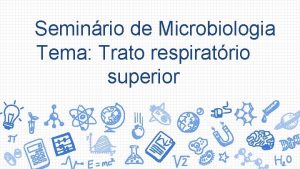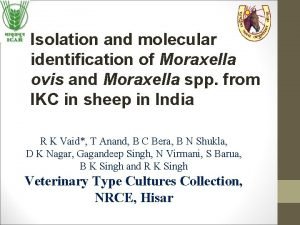N Patel F 2013 Moraxella catarrhalis Large Gramnegative


- Slides: 2

N. Patel F 2013 Moraxella catarrhalis • • Large, Gram-negative diplococcus Fastidious, nonmotile, aerobic Psuedomonadales; Gammaproteobacteria Human pathogen – Infects upper respiratory tract – Can also cause infections in ear, eye, CNS, and joints – Third most common cause of otitis media and sinusitis in children – Immunocompromised hosts (HIV/AIDS patients) are susceptible http: //www. bacteriainphotos. com/light%20 microscopy%20 of %20 bacteria/Moraxella%20 catarrhalis%20 microscopy. jpg • Enters via the nasopharynx • Can be cultured on blood or chocolate agar plates http: //www. f 8 i. org/bacteria/moraxella-catarrhalis/

N. Patel F 2013 Moraxella catarrhalis • Attaches to host cells and infects using Trimeric Autotransporter Adhesins (TAA) such as Usp. A 1 and A 2 proteins – Anchor inserts into outer membrane – Passenger domain passes through membrane into host extracellular environment – Head domain adheres to host elements (collagen, fibronectin, etc. ) https: //figures. boundless. com/11965/full/taabasic 1. jpeg • Possible virulence factor is lipooligosaccharide – Transferrin and lactoferrin receptors on surface help sequester iron from host, and may also serve as virulence factors • Endotoxin similar to those found in Neisseria • Some strains have fimbriae or pili for adhesion • Can be treated with antibiotics – Fluoroquinolones and erythromycin are effective – Currently no vaccine – Nearly all strains produce beta-lactamase • Lends resistance to penicillin and ampicillin http: //mmbr. asm. org/content/73/3/389/F 3. large. jpg



